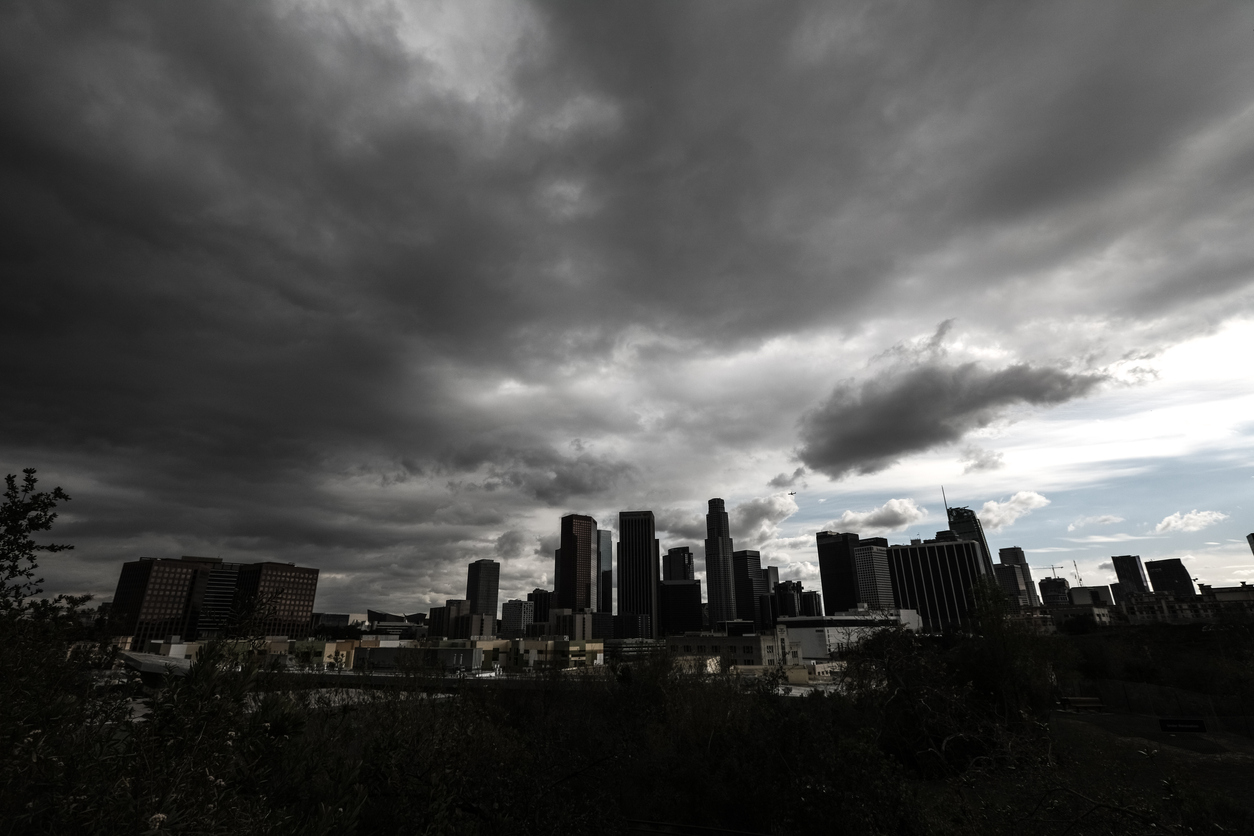Four straight days of record-shattering rainfall from a mega atmospheric river storm in California the first week of February 2024 claimed nine lives, damaged dozens of buildings from debris flows, and had authorities in Los Angeles responding to 475 mudslides. Rain totals in parts of Santa Monica topped 12 inches, while Bel-Air had over 13 inches of rain. Northern California experienced destructive winds of 70 to 80 mph.
Atmospheric rivers are long regions in the atmosphere that transport water. The water vapor they carry is roughly equivalent to the average water flow at the Mississippi River’s mouth, according to the National Oceanic and Atmospheric Administration. When atmospheric rivers make landfall and release all that water, they can cause extreme flooding. These systems also have strong winds that tear down trees and power lines.
In January, a powerful storm hit the Northeast. In New Jersey, the storm triggered widespread massive flooding in Westwood, Hackensack, and Paterson, along with dangerous wind gusts of 40 to 65 mph and power outages. Thousands of New Yorkers were left without power, and New York City was officially under a flood warning.
The Impact of Powerful Storms on Commercial Property
According to United States Geological Survey (USGS) natural hazards scientists, an atmospheric river-driven mega-storm could cause catastrophic damage for California in a worst-case scenario. Such a storm could cause extensive flooding across the state, raising environmental health concerns, causing thousands of landslides, disrupting critical infrastructure for days or weeks, and resulting in $350 billion in damages and $290 billion in business interruption losses.
Flooding from excessive rain is a significant concern for property owners – from habitational risks to office buildings, retailers, and other commercial properties. Wind-driven rain is also a substantial concern for property owners. According to ScienceDirect, wind-driven rain is a major source of building moisture infiltration, often leading to structural damage and degradation. It can cause extensive damage, particularly in large structures with open corridors, as rain can penetrate the building’s façade.
Additionally, wind-driven rain can cause electrical issues, ceiling and drywall damage, and mold growth in wet areas. Any water-sensitive materials exposed to moisture, such as paint, varnishes, and other coatings, can be damaged. Metal items like roofing, wiring, and coils may rust, and rot can eventually set into the building’s structure.
Proactive Steps to Mitigate Losses
Existing Buildings
Whether a flat or sloped roof, asphalt or composite, it is susceptible to unwelcome water. Additionally, many commercial building roofs are loaded with HVAC equipment, vent pipes, skylights, and other building system features, all of which are ‘holes’ in the most inconvenient location – immediately overhead. Be sure to check all rooftop penetrations regularly, both inside and outside. Also, ensure the HVAC system’s seals are intact. The flashings around skylights, stack vents, and other rooftop features should be in good repair. Check for water stains.
Waterproof and seal the exterior using water-resistant paint to safeguard your building from water damage. Vents, electrical outlets, and other openings should be caulked and sealed, and external drains and gutters should be cleaned and maintained regularly to avoid clogging.
If the structure is located in a flood-prone area, keep the soil away from the walls when landscaping. This will keep moisture from accumulating on the foundation in the event of flooding.
Commercial properties should also be equipped with effective stormwater management systems, such as retention ponds and permeable pavements, to reduce the risk of flooding during heavy rain events. Additionally, it is critical to maintain the proper maintenance and upkeep of existing drainage systems.
New Construction
New construction should incorporate best practices for storm resilience from the outset. Developers and builders can add design and construction aspects that improve buildings’ ability to resist severe weather conditions. One crucial factor is the choice of proper building materials. Using weather-resistant and durable materials can assist in preventing weather damage and extend the life of your property.
Designing buildings with slanted roofs and appropriate drainage systems can help prevent water collection and reduce the danger of leaks or damage. Elevated foundations can also prevent flooding.
Integrating resilient landscaping strategies could also improve storm resilience. Using native plants and vegetation that can withstand drought and heavy rain can lessen the requirement for excessive watering while lowering erosion concerns.
About Seneca Insurance Companies
Seneca Insurance Companies are known for having a broad appetite for writing property risks. We offer both admitted and non-admitted ISO-based policies, with catastrophe perils offered based on location and risk characteristics. We also provide Builder’s Risk insurance for new builds and coverage for vacant properties.

